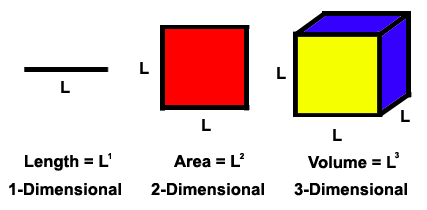14: London Tsai - The Reclusive Dean of The New Escherians: Difference between revisions
| Line 59: | Line 59: | ||
<div data-type="note" data-timestamp="0:15:46"> | <div data-type="note" data-timestamp="0:15:46"> | ||
https://www.bookofproofs.org/graphics/portraits/Hopf.jpeg | https://www.bookofproofs.org/graphics/portraits/Hopf.jpeg | ||
[https://en.wikipedia.org/wiki/Heinz_Hopf Heinz Hopf] was a German mathematician who worked on the fields of topology and geometry. | [https://en.wikipedia.org/wiki/Heinz_Hopf Heinz Hopf] was a German mathematician who worked on the fields of topology and geometry. | ||
</div> | </div> | ||
<div data-type=" | <div data-type="Resource" data-timestamp="0:15:47"> | ||
https://upload.wikimedia.org/wikipedia/commons/thumb/b/b9/Hopf_Fibration.png/500px-Hopf_Fibration.png | https://upload.wikimedia.org/wikipedia/commons/thumb/b/b9/Hopf_Fibration.png/500px-Hopf_Fibration.png | ||
In the mathematical field of differential topology, the [https://en.wikipedia.org/wiki/Hopf_fibration Hopf fibration] (also known as the Hopf bundle or Hopf map) describes a 3-sphere (a hypersphere in four-dimensional space) in terms of circles and an ordinary sphere. Discovered by Heinz Hopf in 1931, it is an influential early example of a fiber bundle. Technically, Hopf found a many-to-one continuous function (or "map") from the 3-sphere onto the 2-sphere such that each distinct point of the 2-sphere is mapped to from a distinct great circle of the 3-sphere (Hopf 1931). Thus the 3-sphere is composed of fibers, where each fiber is a circle — one for each point of the 2-sphere. | In the mathematical field of differential topology, the [https://en.wikipedia.org/wiki/Hopf_fibration Hopf fibration] (also known as the Hopf bundle or Hopf map) describes a 3-sphere (a hypersphere in four-dimensional space) in terms of circles and an ordinary sphere. Discovered by Heinz Hopf in 1931, it is an influential early example of a fiber bundle. Technically, Hopf found a many-to-one continuous function (or "map") from the 3-sphere onto the 2-sphere such that each distinct point of the 2-sphere is mapped to from a distinct great circle of the 3-sphere (Hopf 1931). Thus the 3-sphere is composed of fibers, where each fiber is a circle — one for each point of the 2-sphere. | ||
</div> | </div> | ||
Revision as of 21:21, 14 April 2020
Description
What happened to the Mathematical and Scientific art movement after MC Escher? It went underground.
In this episode of the Portal, Eric begins tracking down the leaders of this hidden movement; one that is smuggling higher level science into transcendent art forms. Eric had to coax one the movement’s foremost members, London Tsai, to come out of obscurity where he had been preserving his mathematical art in sarcophagi of unopened bubble wrap sitting for decades in various New York City studios.
London is just the first of these New Escherians we’ll be profiling. These modern day Prometheans are stealing higher level mathematics from the professorial priesthood replacing the Seraphim and Cherubs of antiquity with topological paintings, protein sculptures, and light symphonies that speak to our hearts, minds and desires for transcendence. The podcast will be released later with video showing a taste of Tsai's groundbreaking work.
Transcript
Episode 14 VTT File (raw file)
Sponsors
Lamps Plus: Get up to 50% OFF hundreds of lights, furniture and décor between November 25 and December 24 go to LampsPlus
Wine Access: Get $100 off your first purchase of $250 or more visit WineAccess
Skillshare: Two whole months of unlimited access to thousands of classes for free visit SkillShare
Portal Player Markup

Lun-Yi London Tsai is a mathematically-trained visual artist based in Brooklyn, New York whose practice includes drawing, painting, welded metal sculpture, and kinetic sculpture.
Examples of London's work



Petra originally known to its inhabitants as Raqmu, is a historical and archaeological city in southern Jordan. Petra lies around Jabal Al-Madbah in a basin surrounded by mountains which form the eastern flank of the Arabah valley that runs from the Dead Sea to the Gulf of Aqaba.

Johannes Brahms (7 May 1833 – 3 April 1897) was a German composer, pianist, and conductor of the Romantic period. Born in Hamburg into a Lutheran family, Brahms spent much of his professional life in Vienna. His reputation and status as a composer are such that he is sometimes grouped with Johann Sebastian Bach and Ludwig van Beethoven as one of the "Three Bs" of music, a comment originally made by the nineteenth-century conductor Hans von Bülow.
The visual cortex is the primary cortical region of the brain that receives, integrates, and processes visual information relayed from the retinas. It is in the occipital lobe of the primary cerebral cortex, which is in the most posterior region of the brain.



Columbia University in the city of New York.

Heinz Hopf was a German mathematician who worked on the fields of topology and geometry.

In the mathematical field of differential topology, the Hopf fibration (also known as the Hopf bundle or Hopf map) describes a 3-sphere (a hypersphere in four-dimensional space) in terms of circles and an ordinary sphere. Discovered by Heinz Hopf in 1931, it is an influential early example of a fiber bundle. Technically, Hopf found a many-to-one continuous function (or "map") from the 3-sphere onto the 2-sphere such that each distinct point of the 2-sphere is mapped to from a distinct great circle of the 3-sphere (Hopf 1931). Thus the 3-sphere is composed of fibers, where each fiber is a circle — one for each point of the 2-sphere.
